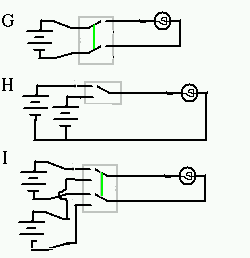Houses have fuses or circuit breakers that act like switches to disconnect any device that is drawing a current that is too large -- for example, more than 15 Amperes. The sum of the current ratings for the devices on a circuit must be less than the circuit breaker's limit.
Here are some examples:
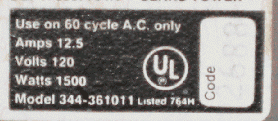 |
 |
| This label on a heater gives both current and wattage information. |
The label on the bottom of a toaster |
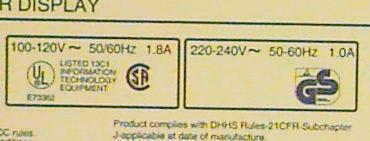 |
| Part of the sign on the back of a computer monitor. It says it can be used in a 100-to-120 V system, and will draw 1.8A, or in a 220-to-240 V system, and then it will draw 1.0 A. |
Please make a table of the information for various devices. (Here is a blank table that you can print out) Please send us at least part of your table -- the device that drew the most current, the device that drew the least current, and another one. We are compiling a giant table of all the values anyone has found.
Judging from your table, what are the implications of a device with a very large current rating?
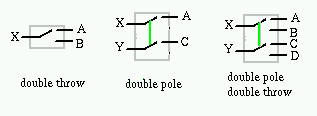 Sometimes
switches do more than just connect or disconnect one wire. For
example, a common kind of switch is the "double throw" switch which
connects the wire on the left to the upper wire on the right or to
the lower wire on the right, depending on its position.
Sometimes
switches do more than just connect or disconnect one wire. For
example, a common kind of switch is the "double throw" switch which
connects the wire on the left to the upper wire on the right or to
the lower wire on the right, depending on its position.Another kind of switch is the "double pole" switch which really is two separate switches connected so that you turn them on and off together. (The green line in the picture represents a mechanical connection, not an electrical connection). This would be useful if you wanted to turn on both the stove light and the fan at once. Finally, there are even "double pole double throw" switches.
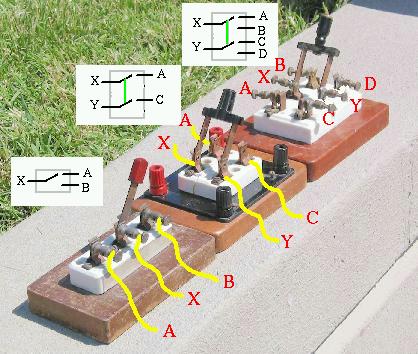
Here's an oldfashioned version of these three kinds of switches.
You can "throw" the switch to right or left, and the handle may be
connecting more than one circuit at once. In addition to making the
connections, these switches also allow having no connection, as
shown; this would not be a desirable property in the problems posed
below -- let's assume our switches always connect some input to
some output.
Now that you know all about switches, here are some questions about
them, that will give you some practice in reading circuit
diagrams.
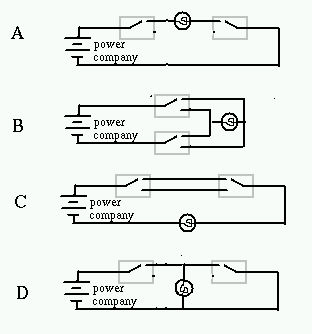 You have a
light switch at the bottom of the stairs and at the top of the
stairs, both of which turn the light on and off. Here are some possible
ways to connect the system. Which do you think you have in your
house? Justify your choice
You have a
light switch at the bottom of the stairs and at the top of the
stairs, both of which turn the light on and off. Here are some possible
ways to connect the system. Which do you think you have in your
house? Justify your choice- Explain what each of these circuits does.


------------ 